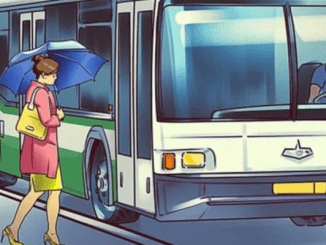Here’s a fun little challenge that’s making people scratch their heads — and it’s more than just a game. These visual puzzles are actually great for boosting your focus, training your eyes to catch subtle details, and sharpening your brain’s pattern recognition skills.
Take a look at the two images above. At first glance, they seem identical: a boy walking his dog down the street, dressed in a hoodie and shorts, enjoying a casual day. But look a little closer, and you’ll realize something’s off — in fact, there are exactly 3 differences between the two pictures.
Can you find them all?

Why Most People Get Tripped Up By This Puzzle
You’d think spotting three differences wouldn’t be that hard. But what makes this challenge surprisingly tricky is how cleverly the changes are placed. They’re not glaring or obvious. Instead, the puzzle relies on small changes in common areas like clothing or background, symmetrical placement that tricks the brain into seeing the same thing twice, and visual misdirection where your eyes focus on one area while differences hide elsewhere.
The human brain tends to scan images quickly and fill in what it “expects” to see, which leads many to overlook minor but intentional changes.
Common Mistakes Solvers Make

- Focusing only on the main subject — Most people concentrate on the boy and dog but forget to look at the background or accessories.
- Rushing through the task — Quick glances won’t cut it. This puzzle requires slow, methodical comparison.
- Overlooking duplicate patterns — When elements like clothes or buildings are symmetrical, differences hide in plain sight.
Step-by-Step Guide to Finding All 3 Differences
Let’s zoom into each part of the image and uncover the hidden details. Here’s a breakdown of the 3 differences — all of which are clearly marked with red circles in the image above.
Video : Spot the Differences Find the Difference Find 3 Differences Find the Difference Game
Difference #1: The Light Pole Top
Check out the streetlight pole to the left of the boy. In the left image, the pole has a small cap at the top. But in the right image, the cap is missing. Because poles usually look the same, most people assume it hasn’t changed.
Difference #2: The Boy’s Hoodie String
Look closely at the boy’s hoodie. In the left image, two white strings hang from the hoodie’s collar — one on each side. In the right image, only the left string is visible; the other has vanished. This detail is subtle but clear once you see it.
Difference #3: The Dog’s Tail Direction
Now, glance at the dog. In the left image, the dog’s tail curves to the left (toward the edge of the frame). In the right image, the tail curves inward, pointing right toward the dog’s own body. The change is tiny but definite — and often missed on the first look.

Why These Types of Puzzles Are More Than Just Games
Sure, they’re fun — but there’s real cognitive benefit too. Spot-the-difference puzzles improve attention to detail, help develop patience and visual memory, strengthen pattern recognition skills, and reduce stress through focused engagement.
It’s like a mini workout for your brain — and it doesn’t even feel like work.
Encourage Interaction and Share the Challenge
So, how many did you spot before checking the answers?
Now it’s your turn:
Comment below with how long it took you to find all three.
Tag a friend to see if they can beat your time.
Share the puzzle and challenge your followers — who will get it right without peeking?
Most people miss at least one difference on their first try — but once they see it, they can’t unsee it!
Video : 【Hard Spot the Difference】 Challenging Spot the Difference Brain Game
Conclusion: Keep Your Eyes Sharp and Your Mind Sharper
This simple “spot the difference” puzzle might look like child’s play, but it’s a clever way to keep your mind alert and engaged. The more you challenge yourself with puzzles like this, the better your brain becomes at spotting small details, solving problems, and thinking critically.
So next time you see a picture puzzle like this one, don’t scroll past. Give it a try, train your focus, and have some fun. Because at the end of the day, it’s not just about finding differences — it’s about seeing what others might miss.


